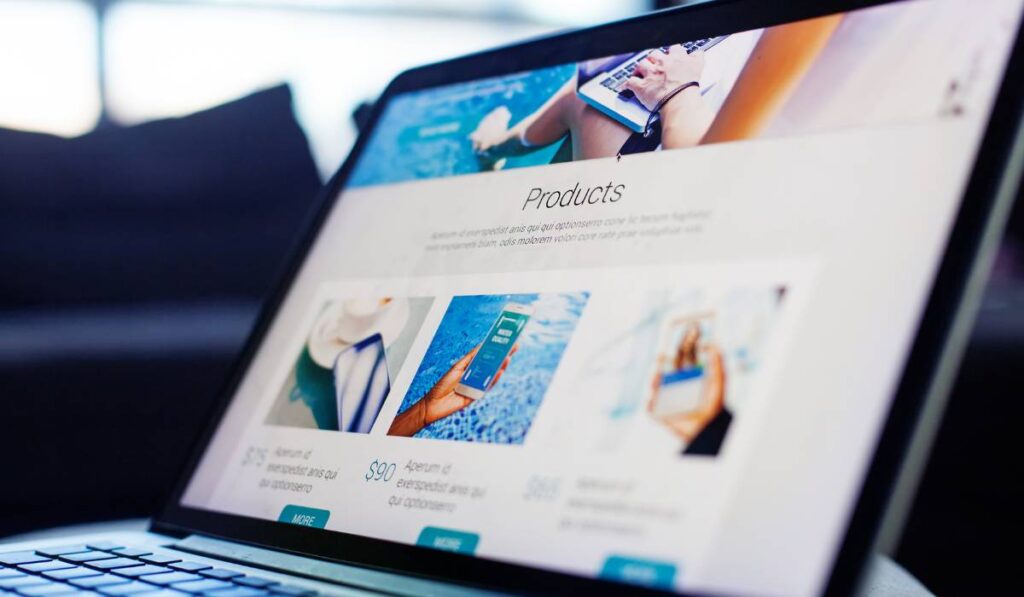In the world of digital marketing, landing pages play a vital role in the success of pay-per-click (PPC) campaigns. A landing page is a standalone web page designed with a specific objective in mind, usually to capture leads or drive conversions. In this article, we will explore What a landing page is and its importance in PPC campaigns and understand its role in maximizing campaign effectiveness.
Understanding Landing Pages
Definition and Purpose
A landing page is a targeted web page that users are directed to after clicking on an ad or search result. Its primary purpose is to persuade visitors to take a desired action, such as making a purchase, signing up for a newsletter, or filling out a form. Unlike regular website pages, landing pages are designed with a singular focus, providing relevant and compelling content to guide users toward conversion.
Components of a Landing Page
A well-structured landing page consists of several key components:
Headline and Subheadline
The headline and subheadline are the first elements that visitors see when they land on a page. They should clearly communicate the value proposition and entice users to explore further.
Call-to-Action (CTA)
A strong and persuasive call-to-action is crucial for driving conversions. The CTA should be prominently displayed, using action-oriented language and compelling design.
Form or Conversion Element
To capture user information, landing pages often include a form or conversion element. It should be simple, easy to fill out, and collect only essential information to minimize friction.
Persuasive Content and Visuals
Engaging content and relevant visuals are essential to keep visitors engaged and convey the benefits of the offering. It’s important to use concise and persuasive copy that addresses pain points and highlights unique selling points.
Trust Indicators
Trust indicators, such as testimonials, customer reviews, or security badges, help establish credibility and build trust with visitors. Including them on the landing page can increase conversion rates.
Types of Landing Pages
Landing pages can be categorized into various types based on their objectives and content:
Lead Generation Landing Pages
These landing pages focus on capturing user information, such as names, email addresses, or phone numbers. They are commonly used to build email lists or generate leads for sales teams.
Click-Through Landing Pages
Click-through landing pages aim to warm up visitors and encourage them to click through to another page, usually an e-commerce product page or a sign-up form. These pages provide additional information to create interest and increase the chances of conversion.
Squeeze Pages
Squeeze pages are designed to collect information quickly and efficiently. They usually offer visitors a valuable resource, such as an e-book or a webinar, in exchange for their contact details.

See How my agency can grow your business
- Web Design - Get a website that best describes your business.
- SEO - Outrank competitors and win search engine first pages.
- PPC - Ensure the right action from the right audience.
- SMM - Create more impressions. Feel more connected.

See How my agency can grow your business
- Web Design - Get a website that best describes your business.
- SEO - Outrank competitors and win search engine first pages.
- PPC - Ensure the right action from the right audience.
- SMM - Create more impressions. Feel more connected.
Role of Landing Pages in PPC Campaigns
Improving Ad Relevance and Quality Score
Landing pages have a direct impact on the quality score of PPC campaigns. When landing pages align closely with the ad copy and keywords, it improves ad relevance, which can result in higher quality scores. A higher quality score leads to lower costs per click and higher ad rankings, maximizing the return on investment (ROI) for PPC campaigns.
Enhancing Conversion Rates
Landing pages are optimized for conversions, focusing on providing a seamless user experience and persuasive content. By eliminating distractions and guiding visitors toward the desired action, landing pages significantly improve conversion rates compared to generic website pages. This ultimately leads to more leads, sales, or other valuable actions.
Targeted Audience Segmentation
PPC campaigns often target specific audience segments. By creating dedicated landing pages for each segment, marketers can provide tailored content and offer that resonate with the target audience. This personalized approach increases the likelihood of conversions and improves campaign performance.
A/B Testing and Optimization
Landing pages allow marketers to conduct A/B tests to determine the most effective elements and designs. By testing different headlines, CTAs, visuals, or form placements, marketers can optimize landing pages for maximum performance. Continuous optimization based on data-driven insights can significantly improve conversion rates and overall campaign success.
Tracking and Analytics
Landing pages provide valuable data and insights through analytics tools. Marketers can track key metrics like bounce rates, time on page, and conversion rates to evaluate the performance of their PPC campaigns. These insights help identify areas for improvement and make data-backed decisions to optimize future campaigns.
Best Practices for Landing Page Design
Clear and Compelling Headline
The headline of your landing page is the first thing visitors see, and it should instantly grab their attention. Make sure the headline is clear, concise, and conveys the value proposition of your offer. Use persuasive language that entices visitors to read further and take action.
Concise and Persuasive Copy
Keep your landing page copy concise and to the point. Use persuasive language that highlights the benefits of your offer and addresses the pain points of your target audience. Break up the text into easily scannable paragraphs, use bullet points, and emphasize key points to enhance readability.
Captivating Visuals
Incorporate visually appealing elements on your landing page to make it more engaging. Use high-quality images or videos that showcase your product or service. Visuals can help convey your message quickly and effectively, capturing visitors’ attention and encouraging them to explore further.
Strong Call-to-Action (CTA)
Your call-to-action (CTA) is the most critical element on your landing page. Make sure it stands out and clearly communicates the desired action you want visitors to take. Use action-oriented language and design the CTA button to be highly visible. Consider using contrasting colours to make it more eye-catching.
Mobile-Friendly Design
With the increasing use of mobile devices, optimising your landing page for mobile users is essential. Ensure that your page is responsive and displays properly on different screen sizes. Test your landing page on various devices to ensure a seamless user experience and maximize conversions.
Landing Page Optimization Techniques
A/B Testing
A/B testing is a powerful optimization technique for landing pages. Create different variations of your landing page and test them against each other to see which version performs better. Experiment with different elements such as headlines, CTAs, colors, layouts, and imagery. Analyze the results and make data-driven decisions to optimize your landing page for higher conversions.
User-Friendly Forms
If your landing page includes a form, make sure it is user-friendly and easy to fill out. Only ask for essential information to minimize friction and increase form completions. Use form validation to provide real-time feedback and guide users in filling out the form correctly. Consider using autofill capabilities to simplify the process for returning visitors.
Page Load Speed
Page load speed is crucial for user experience and conversion rates. Optimize your landing page for fast load times by minimizing file sizes, compressing images, and leveraging browser caching. A slow-loading landing page can lead to higher bounce rates and lower conversion rates. Regularly monitor and optimize your page load speed to ensure optimal performance.
SEO Optimization
While landing pages are often used for paid advertising, optimizing them for search engines can bring additional organic traffic. Conduct keyword research and incorporate relevant keywords naturally into your landing page copy, meta tags, and headings. Ensure your landing page has a descriptive meta title and meta description that entices users to click when it appears in search engine results.
Tracking and Analytics
Conversion Tracking
Set up conversion tracking to measure the effectiveness of your landing page and PPC campaigns. Use tools like Google Analytics or other tracking platforms to monitor key metrics such as conversion, click-through, and bounce rates. Analyzing these metrics provides insights into your landing page’s performance and helps identify improvement areas.
Heatmaps and Scroll Maps
Heatmap and scroll map tools allow you to visualize user behaviour on your landing page. Heatmaps show where users click, move their cursor, or spend the most time, helping you understand which elements attract attention and which are being ignored. Scroll maps indicate how far visitors scroll down the page, highlighting the areas that receive the most attention. Use these insights to optimize your page layout and content placement.
User Feedback and Surveys
Gathering user feedback is valuable for understanding the user experience on your landing page. Implement user surveys or feedback forms to collect insights directly from visitors. Ask questions about their experience, the clarity of your message, and any suggestions they may have. Use this feedback to make improvements that align with your audience’s preferences and needs.
Multivariate Testing
Multivariate testing allows you to test multiple elements simultaneously on your landing page. It helps identify the best combination of various elements, such as headlines, images, CTAs, or form placements. By testing different combinations, you can uncover the optimal configuration that leads to the highest conversion rates.
Conclusion
Landing pages are indispensable assets in PPC campaigns. Their focused approach, tailored content, and optimization capabilities make them highly effective in driving conversions and maximizing campaign success. By understanding the role of landing pages and implementing best practices, marketers can create impactful campaigns that deliver impressive results.
Ready to supercharge your PPC campaigns? Contact VentCube today and take your landing pages to the next level! Boost conversions, engage your audience, and optimize your campaigns for success.



